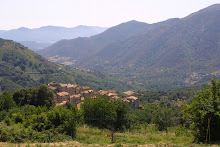The Virtual Shanghai Blog has moved to a new address. To keep in touch with new developments of the Virtual Shanghai project, we invite you to join us at Blog Virtual Shanghai on the Hypothèses platform.
Lyon-Shanghai, 24 February 2010
The Old city area viewed from the sky

mercredi 24 février 2010
mercredi 10 février 2010
A 1927 full aerial view of the Shanghai area
Between 28 July and 17 August 1927, the British military in China surveyed the Shanghai area by plane and produced a systematic coverage of the Shanghai area through aerial photographs. This unique document is probably one of the earliest photographic records of Shanghai viewed from the sky. Two copies of the document exist at the Royal Geographical Society in London. It is made up of many photographs that were patiently cut and pasted together. Yet the document itself comes into 24 sheets that each cover different locations with a slight overlap. The RGS kindly authorized the digitizing of the 24 sheets that we subsequently stitched together with Photoshop. With very little distortion, the 24 sheets fit together almost perfectly. The reconstructed document (200 x 300 cm) can be found on Virtual Shanghai in the Source Maps section under ID727. As there was no related document, there is to no way to ascertain why the British military did this survey at the time. We may assume that since it was a period of heightened tension in China, with the Northern Expedition unfolding in Central China and challenges to foreign settlements, the British military made preparations for the defense of Shanghai. Marks and circles were added to the original view that may refer to locations with military significance. At this stage, however, this is a mere hypothesis.
mardi 2 février 2010
1932 Sino-Japanese conflict in Shanghai: Maps of the ceasifire agreement
The 1932 Sino-Japanese conflict was the first instance of modern war in the midst of a large metropolis. It left thousands of military and civilian casualties and turned a vast number of neighborhoods into ruins. While the fighting lasted only a few weeks beginning at the end of January 1932, a ceasefire agreement was signed only on 5 May after protracted negotiations through the mediation of Western powers. Attached to the agreement was a set of 14 maps that showed the area of fighting and various post-war dispositions. The maps must be read in connection with the text of the agreement.
I found a partial set of the original maps (8/14) signed by the Chinese and Japanese delegates, as well as by the official witnesses to the agreement at the U.K. National Archives. These are valuable documents as they show the local topography at a scale of 1/5000, including a unique cover of the Zhabei area. An assemblage of the available maps can be found on Virtual Shanghai (Map ID 774). Individual maps are also available under Map ID 765-772. One easy way to find the whole set is to search under "Hu bei dixing zongtu" in the search box for 'Transliteration'.
The missing maps must be somewhere in the vaults of the U.K. National Archives that holds a huge collection of maps (11 million items). Unfortunately, large numbers have not yet been catalogued. Further research should lead to their eventual retrieval.
I found a partial set of the original maps (8/14) signed by the Chinese and Japanese delegates, as well as by the official witnesses to the agreement at the U.K. National Archives. These are valuable documents as they show the local topography at a scale of 1/5000, including a unique cover of the Zhabei area. An assemblage of the available maps can be found on Virtual Shanghai (Map ID 774). Individual maps are also available under Map ID 765-772. One easy way to find the whole set is to search under "Hu bei dixing zongtu" in the search box for 'Transliteration'.
The missing maps must be somewhere in the vaults of the U.K. National Archives that holds a huge collection of maps (11 million items). Unfortunately, large numbers have not yet been catalogued. Further research should lead to their eventual retrieval.
Inscription à :
Articles (Atom)
